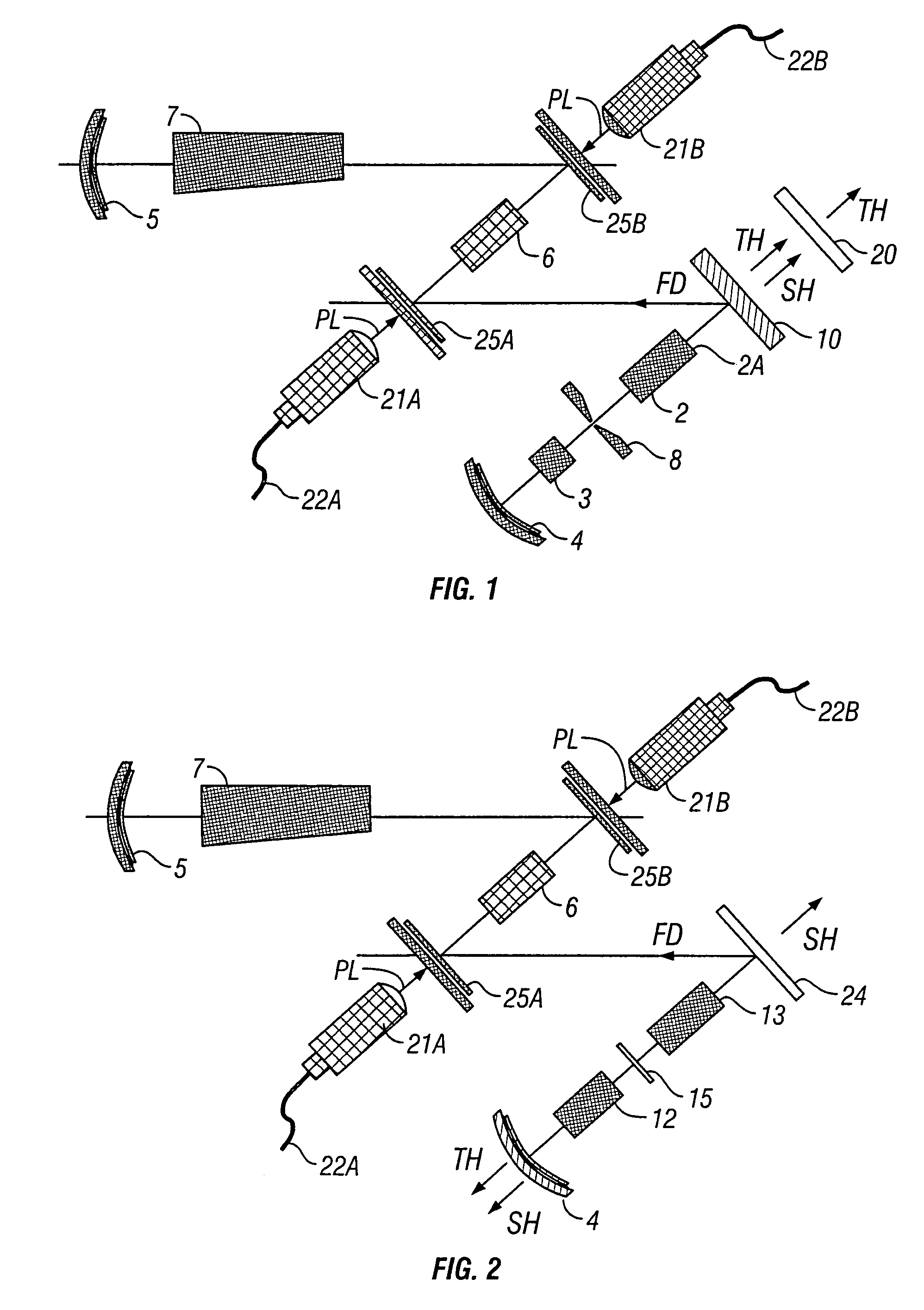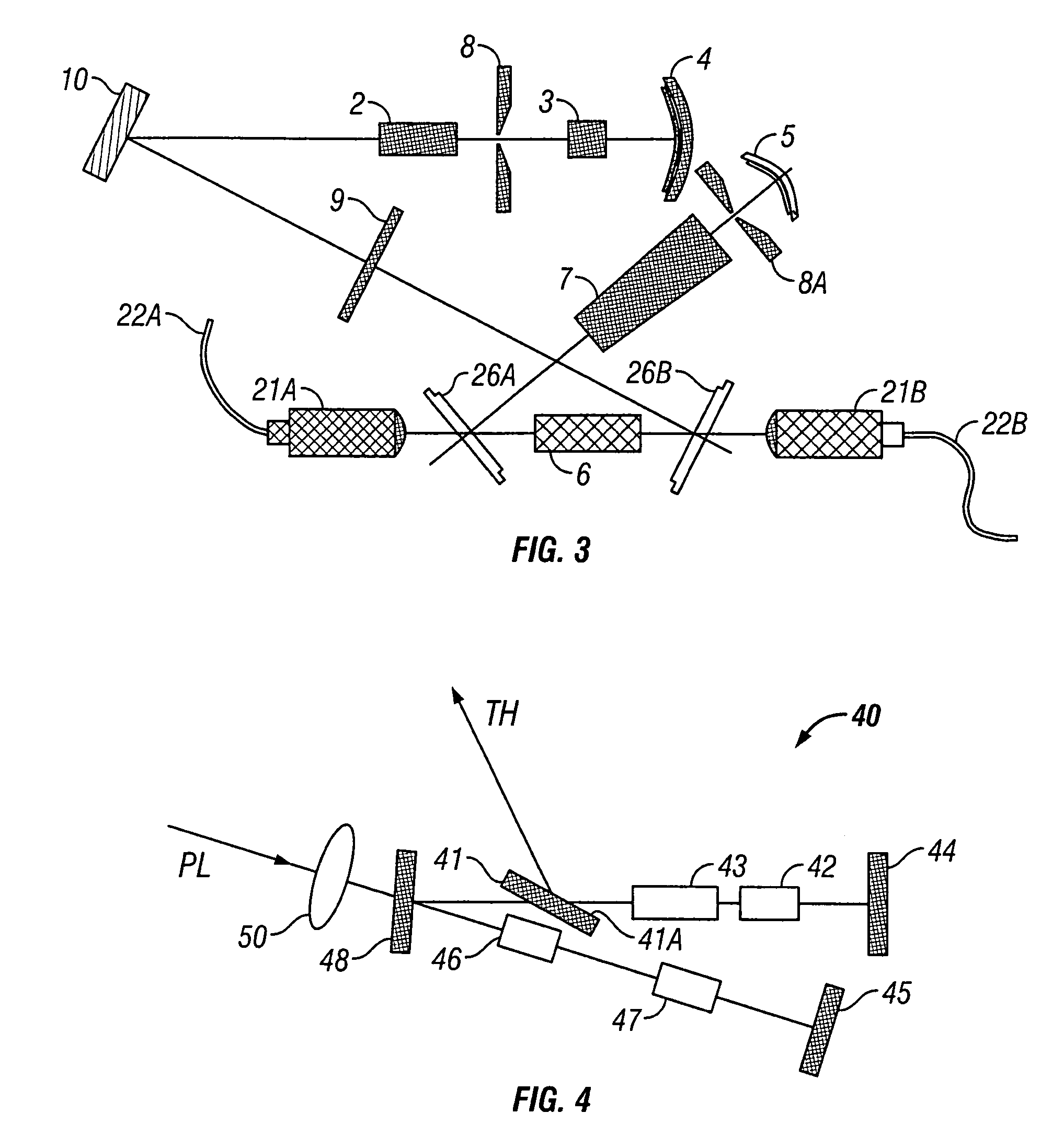Diode pumped laser with intracavity harmonics
a diode pumped laser and harmonic technology, applied in semiconductor lasers, laser details, optical resonator shape and construction, etc., can solve the problems of limited efficiency of external harmonic conversion, and limited lifetime considerations of conversion process efficiency, so as to achieve the effect of optimizing the overall conversion
- Summary
- Abstract
- Description
- Claims
- Application Information
AI Technical Summary
Benefits of technology
Problems solved by technology
Method used
Image
Examples
embodiment 90
[0085]Referring now to FIGS. 10A and 10B, the techniques shown represent optical realizations of the functional element previously represented by numeral 10 and 11 in FIGS. 1 and 2, respectively. FIG. 10A shows an embodiment 90 for beam separation comprising two tilted dichroic plates 91 and 92. Tilted plate 91 is generally coated on side 91 A for high reflection in the UV and high transmission at other wavelengths. Use of an angled plate makes the design of such dichroic coating generally easier than for a flat plate. Furthermore, the angle can be selected to also provide additional dispersion between the visible and UV beams so that a portion of the second harmonic (designated SH) is reflected from plate 91, generally off-set by some angle from the UV beam. A second tilted plate 92 is coated on side 92A for high reflection of the green and high transmission in the infrared. Again, the tilt on plate 92 deflects any remaining UV light away from the path of the fundamental beam, desi...
embodiment 95
[0086]An alternative embodiment 95 using dual dichroic coating is shown in FIG. 10 B, where a single tilted plate 96 is used with the feature that it has two different dichroic coatings on its two sides. Side 96 A is coated for high reflection at the UV wavelength and high transmission for the visible and infrared. Side 96 B is coated for high transmission in the infrared and high reflection in the visible. The plate's thickness and angle are chosen to provide sufficient separation between the UV and visible beams allowing extraction of the UV beam, again with high purity.
[0087]Note that both of the above embodiments use combination of tilted surface and dichroic coatings assures higher purity of the spectral content the desired harmonic than is possible with coatings alone, which are known to be imperfect.
[0088]Still another embodiment is shown in FIG. 11 which is designed to overcome the disadvantages of trichroically coated optics. As was mentioned above, the proximity of the 355...
PUM
 Login to View More
Login to View More Abstract
Description
Claims
Application Information
 Login to View More
Login to View More - R&D
- Intellectual Property
- Life Sciences
- Materials
- Tech Scout
- Unparalleled Data Quality
- Higher Quality Content
- 60% Fewer Hallucinations
Browse by: Latest US Patents, China's latest patents, Technical Efficacy Thesaurus, Application Domain, Technology Topic, Popular Technical Reports.
© 2025 PatSnap. All rights reserved.Legal|Privacy policy|Modern Slavery Act Transparency Statement|Sitemap|About US| Contact US: help@patsnap.com



